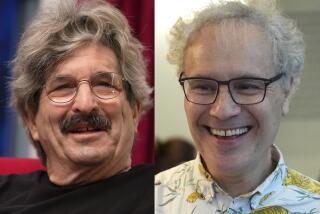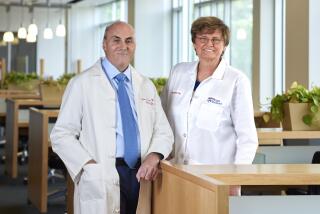A. Hershey; Chemist Won Nobel for DNA Work
- Share via
Alfred D. Hershey, a chemist who won the Nobel Prize for showing that DNA is the carrier of genetic information, has died. He was 88.
Hershey, a staff member at the Cold Spring Harbor Laboratory in New York since 1950, died Thursday in New York.
He shared the 1969 Nobel Prize in medicine with physicist-biologist Max Delbruck and biologist Salvador Luria. The three were known collectively as “the phage group.”
That term refers to their work with special viruses, bacteriophages, to study the role of genetic material, DNA, in living organisms. Phages are viruses that infect bacteria.
Geneticist Norton Zinder at Rockefeller University described Hershey as “one of the most quiet, reserved and pleasant persons I know. In his work he was able to show that it is the DNA of the phage that carries its genetic information.”
Hershey and graduate student Martha Chase devised the “Waring blender” experiment, which allowed them to see which part of the virus, the DNA or the protein, carries inherited information. The experiment was conducted in 1952.
“Al Hershey was the quintessential scientist,” said John Cairns, former director of the Cold Spring Harbor Laboratory.
In the early 1940s, Hershey collaborated with Delbruck and Luria to develop phage as a good experimental system. Their findings have continued to influence the study of molecular biology. Another member of their study group was James Watson, co-discoverer of the structure of DNA, for which he and Sir Francis Crick shared a Nobel Prize. Watson is president of the Cold Spring Harbor Laboratory.
Hershey is survived by his wife of 50 years, Harriett Davidson, and their son, Peter.






